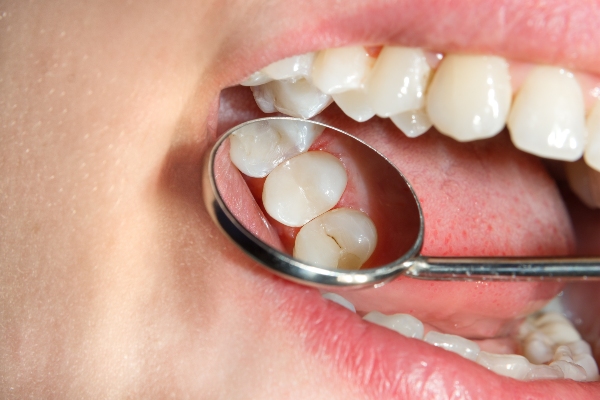 Dental caries, commonly known as tooth decay or cavities, are a prevalent dental problem among children. Composite fillings are one great solution to this often painful and sensitive issue. Composite fillings work to stop tooth decay in its tracks while still allowing filling recipients to maintain a more natural-looking smile.
Dental caries, commonly known as tooth decay or cavities, are a prevalent dental problem among children. Composite fillings are one great solution to this often painful and sensitive issue. Composite fillings work to stop tooth decay in its tracks while still allowing filling recipients to maintain a more natural-looking smile.
What is a composite filling?
Composite fillings, composite resin fillings, or white fillings are all names for a specific type of filling dentists use to treat tooth decay. They are made by filling plastic resin with powdered glass, quartz, or ceramic material and make a good option for small- to mid-size restorations. Composite materials are fairly strong, though not as strong as amalgam. If properly cared for, composite resin fillings can last many years before needing replacement.
One attractive quality of composite resin fillings is their color. Unlike amalgam or gold fillings, dentists can match the color of a child’s teeth with composite resin. This means that the presence of a filling does not have to be an obvious fact to others when the child smiles or laughs. However, it is possible to stain composite fillings. Therefore, a child needs to practice good oral hygiene habits and may want to avoid stain-causing foods, beverages, and activities.
How do composite fillings work?
Just like other filling types, dentists use composite fillings to treat tooth decay by removing the decay and putting the resin in the space left behind. When done correctly, the composite filling will replace the decayed portion of the tooth, restore it to its normal appearance and function, and prevent future decay from developing. The child should be able to eat, chew, speak, laugh, brush, floss, and rinse like normal, though they will want to be careful about staining, and a pediatric dentist may recommend particular kinds of toothpaste, floss, and mouthwash.
Getting composite fillings is a common and relatively simple procedure. First, the dentist will numb the child’s mouth to remove the tooth decay and possibly some surrounding tissue. After removing the decayed material, the dentist will clean, dry, and prepare the tooth to accept the resin. The dentist needs to keep the tooth sufficiently dry at this point for the composite resin to work effectively.
Then the dentist will fill in the hole with a specially prepared composite resin designed to closely match the color of the child’s teeth. The dentist will then cure the filling with a special blue-colored light. This curing step helps ensure the filling stays in place and can stand up to future chewing, biting, and grinding pressures. Finally, the dentist will polish the tooth, check the child’s bite, and make sure both parent and child are satisfied with the overall feel and appearance.
Conclusion
If your child’s pediatric dentist tells you they need a filling, ask whether a composite filling is a good option for your child. This tooth-colored resin filling can be an excellent way to keep their smile natural, healthy, and bright for years to come.
Request an appointment or call Hudson Valley Pediatric Dentistry at 845-363-4177 for an appointment in our Middletown office.
Recent Posts
Even with healthy oral habits, children can find themselves in need of dental restoration. Tooth-colored fillings allow pediatric dentists to provide their patients with aesthetically pleasing results. Here are some details on choosing this restorative option to repair dental cavities.Today, patients want teeth to look natural when laughing or smiling, as this can affect their…
Created with quartz or glass and using a resin medium, composite fillings are quickly becoming the go-to for many pediatric dentists. The fillings restore functionality to broken teeth by allowing the patient to bite or chew without pain. In addition, because the fillings look like natural teeth, they may help with self-esteem in relation to…
If your child has cavities, consider composite fillings. Compared to traditional fillings, the newer composite variety offers some significant benefits.Composite restorations consist of synthetic resin, a plastic material mixed with tiny particles of quartz or glass. The result is a solid, tooth-colored paste that becomes hard and sturdy when it dries. Because it consists of…


